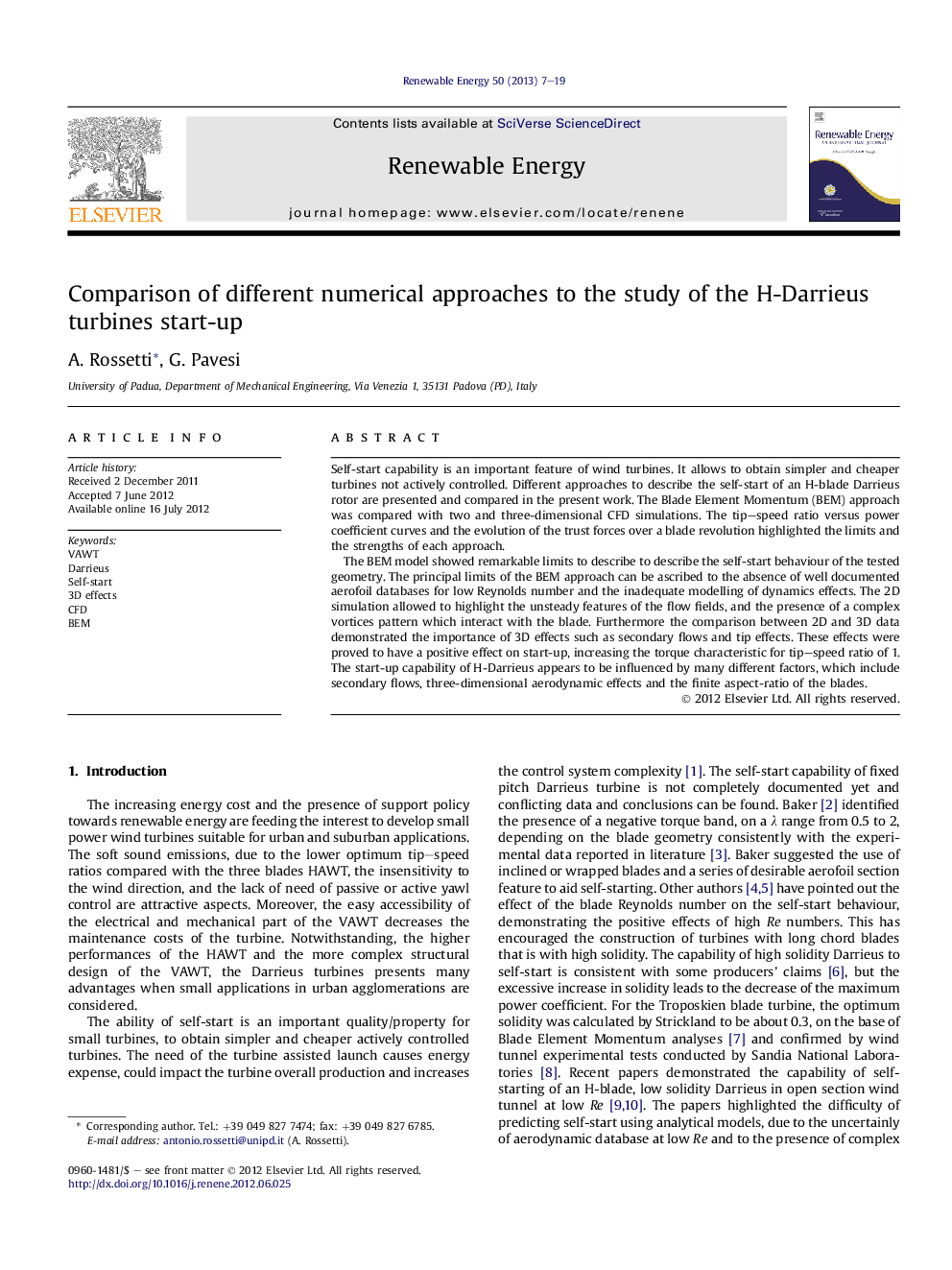| کد مقاله | کد نشریه | سال انتشار | مقاله انگلیسی | نسخه تمام متن |
|---|---|---|---|---|
| 300344 | 512480 | 2013 | 13 صفحه PDF | دانلود رایگان |

Self-start capability is an important feature of wind turbines. It allows to obtain simpler and cheaper turbines not actively controlled. Different approaches to describe the self-start of an H-blade Darrieus rotor are presented and compared in the present work. The Blade Element Momentum (BEM) approach was compared with two and three-dimensional CFD simulations. The tip–speed ratio versus power coefficient curves and the evolution of the trust forces over a blade revolution highlighted the limits and the strengths of each approach.The BEM model showed remarkable limits to describe to describe the self-start behaviour of the tested geometry. The principal limits of the BEM approach can be ascribed to the absence of well documented aerofoil databases for low Reynolds number and the inadequate modelling of dynamics effects. The 2D simulation allowed to highlight the unsteady features of the flow fields, and the presence of a complex vortices pattern which interact with the blade. Furthermore the comparison between 2D and 3D data demonstrated the importance of 3D effects such as secondary flows and tip effects. These effects were proved to have a positive effect on start-up, increasing the torque characteristic for tip–speed ratio of 1. The start-up capability of H-Darrieus appears to be influenced by many different factors, which include secondary flows, three-dimensional aerodynamic effects and the finite aspect-ratio of the blades.
► H-Darrieus start-up was modelled and studied by different approaches.
► Blade Element Momentum was compared with 2D and 3D unsteady CFD analyses.
► BEM results were proved to be markedly influenced by input aerodynamic data.
► 2D and 3D analyses gave different results of torque, flow fields and start-up trend.
► 3D analyses highlighted the relevance of Tip effects in the start-up capability.
Journal: Renewable Energy - Volume 50, February 2013, Pages 7–19